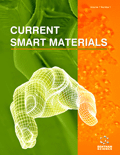Abstract
Background: Innovation in ceramic materials relies on the processing of powders. Yttria, also known as yttrium oxide, belongs to the rare-earth group (RE2O3 - RE from La to Lu, including Sc and Y). Due to the great properties and end-use of RE-based materials since agriculture until astronomy, studies on processing, sintering and microstructural evolution of RE-based materials are essential to provide new materials with improved characteristics. The aim of this paper is to obtain dense compacts of yttria by powder technology, in which the effect of sintering temperature on sample's microstructure is evaluated.
Methods: Yttria powders (Y2O3) were characterized by Photon Correlation Spectroscopy (PCS), X-ray Diffraction (XRD), and Scanning Electron Microscopy (SEM). Cylindrical powder compacts were produced by uniaxial compaction, followed by hydrostatic compaction. Sintered samples obtained under sintering temperatures from 1350 to 1550ºC were evaluated by SEM, XRD, apparent density, and true density.
Results: Cubic C-type yttria powders exhibited a mean particle size (d50) of 1.6μm, and morphology like acicular. Powder compacts (diameter x height) of 9.57mm ± 0.01 x 1.53mm ± 0.01 presented mean apparent density of 53.69% (based on free powder density). Sintered samples at 1550ºC exhibited the most densification, 65.0% related to the green density and 91.0% related to theoretical density, respectively.
Conclusion: Yttria cylindrical compacts with dense microstructure, and symmetric dimensions were formed by powder technology from powders with a mean particle size of 6.51μm, by compaction methods (uniaxial and hydrostatic), followed by sintering. The most densification of samples was achieved by the sintering condition of 1550ºC for 2h, providing samples with a theoretical density of 91%. These results provide useful subsidies to advance toward full densification of yttria-based materials.
Keywords: Yttria, rare-earths, sintering, powder technology, photon correlation spectroscopy, SEM.
Graphical Abstract
 4
4



